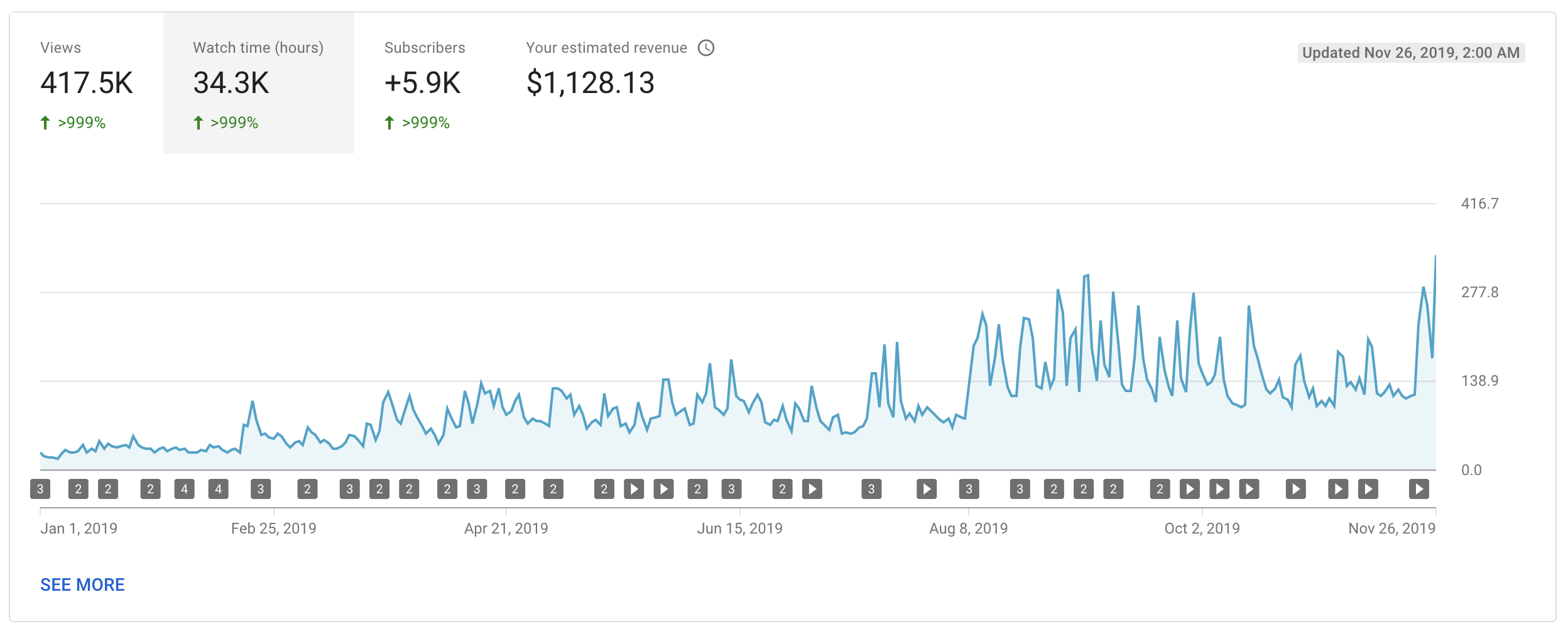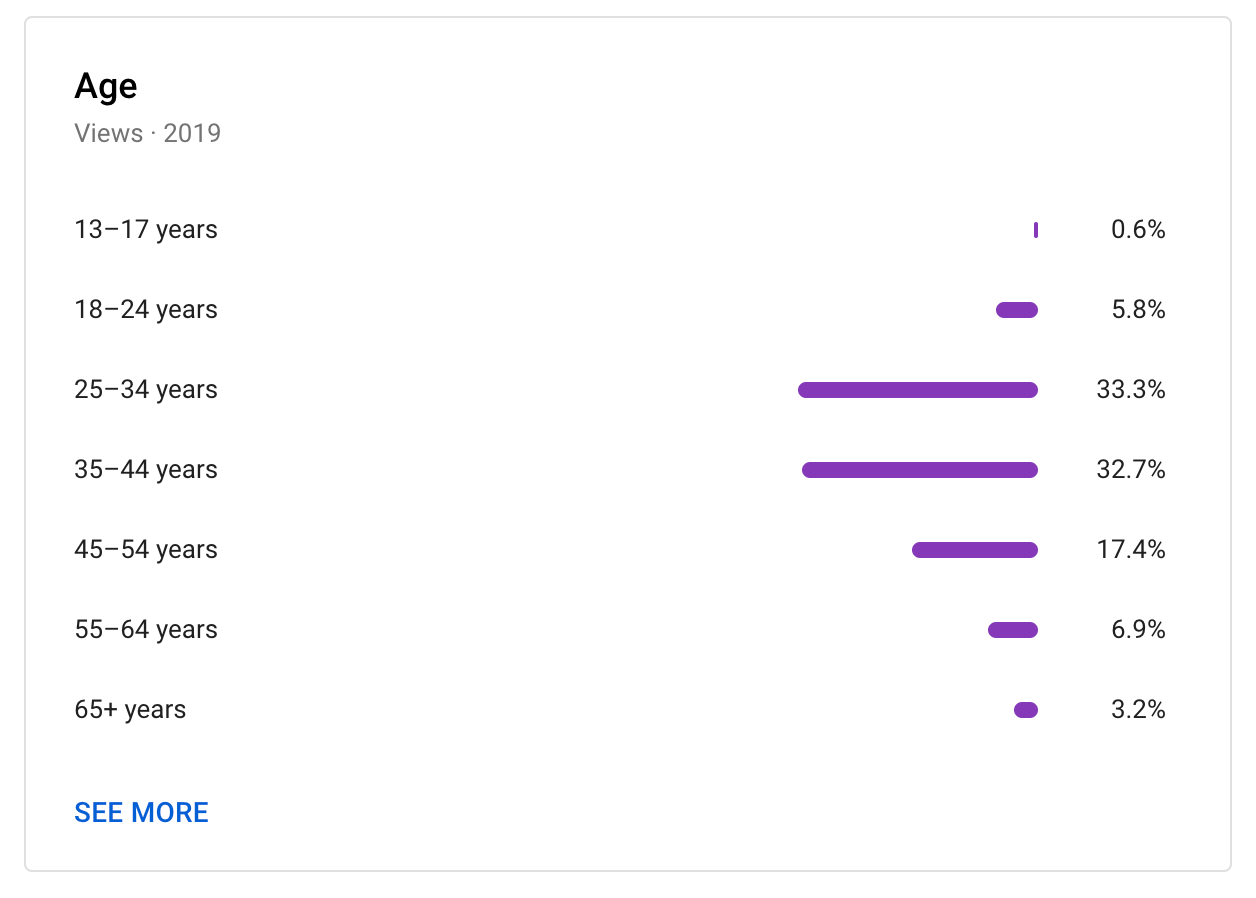My YouTube Creator Story

Millions of dollars all for shooting and posting videos created with your phone. Seems easy to make a fortune on YouTube if you don't mind letting people watch you play video games, chat as you walk down the street, or open toys.
As I approach the end of my first full year as a YouTube creator, I will discuss the reality and potential in the world of online video. I spent the end of 2018, creating the first few videos for the DrVax channel and launched the channel fully formed at the beginning of this year.
It has been an exciting ride, and here is my story.
Want to check out the channel first, it is located at https://youtube.com/c/drvax.
What have I learned while producing 107 videos, creating the DrVax.com website, Facebook page, and YouTube Channel? This is not easy. It is tempting to point to the handfuls of overnight YouTube success stories, mostly gaming channels, and live vlogs, and assume anyone can create a million viewer channel. In reality, many creators struggle to reach 1,000 subscribers and quit producing regular content after less than a year.
Now a bit of background before I share my experience. The founding mission of the DrVax YouTube channel and the website was to provide educational content to "baby boomers" looking to learn new skills for fun, enjoyment, and perhaps supplemental income during retirement. The skills would center around activities boomers could use to "make" things. From the DrVax.com about page:
I'm Irv Shapiro AKA Dr. Vax. I am not an MD or PHD just a guy that enjoys technology. Over thirty years ago while working at Digital Equipment Corporation (DEC) and specializing in VAX (virtual address extended) computers, I acquired the nickname of Dr. Vax.
This blog captures my love for learning new stuff and communicating it to others. While building businesses, first inside of DEC and then at three startups I founded, I had the opportunity to study topics that range from computer technology to accounting, from education to machine learning, from motivation to organizational dynamics. Now I will explore topics that tickle my fancy and share my experiences with you.
Retirement is not an end it is a beginning. It is an opportunity to start a new hobby or even a new part time career doing something you love. As my retirement career I am dedicated to helping others learn new skills from the exciting "maker" world.
Maker's are people that create things. Things made from wood, from plastic, with electronics, in the kitchen or in the shop. Much of the joy of becoming a "maker" is sharing your creations with friends, family, children and grandchildren.
With the explosion of online shops like eBay and Etsy it is possible to turn your new hobby into a source of retirement income.
If you enjoy learning, making things, and sharing your creations, you will find this a satisfying destination.
I determined early, due to my skills, and experiences, that DrVax would focus on video. After looking at the options for video on Facebook, Vimeo, Instagram, LinkedIn, and Youtube, I selected YouTube. YouTube provides a robust set of video publishing tools, an excellent search engine, and free hosting for both long and short format video content.
The challenge I anticipated, which proved significant, was that my target demographic, people in their 50's, 60's, and 70's spend much more time on Facebook than YouTube. I learned shortly after launching the channel that friends my age didn't even understand that YouTube channel subscriptions were free. While they watch videos people send them, they rarely search for content on YouTube.
Unfortunately, Facebook is a much harder platform to monetize for a video creator, and the publishing tools are less flexible. Perhaps, I could publish on YouTube and advertise on Facebook, directing people from the ads to my YouTube channel. Furthermore, to capture additional Google search traffic, I would create a drvax.com website as a secondary destination. Here is what happened.
Today the channel contains videos about becoming a maker, woodworking and 3d printing with the majority of content focused on 3d printing. I own a worldwide trademark for "DrVax," and the content is accessible at https://youtube.com/c/drvax, on https://drvax.com, and the DrVax Facebook business page at https://www.facebook.com/DrVax-2550009975039839.
As Thanksgiving approaches the DrVax YouTube channel has over 6,200 subscribers. 75 percent of the channel views are from non-subscribers. Viewers, both subscribers, and non-subscribers watched over 258,000 minutes (4.3k hours) of videos in the last 28 days.
Below are the summary analytics for the channel year to date in 2019:

Subscribers are only part of the story. Since advertisers and sponsors are interesting in reaching as many people as possible, they focus on video watch time and views. Subscriber counts are only a proxy for viewers interest and loyalty. The DrVax total viewership likely approaches 30,000 people a month.
Furthermore, I will reach almost 500,000 views by the end of the year and viewers have watched over 2 million minutes of DrVax videos. (The values in the chart above this paragraph are in hours.)
Subscribing to a YouTube channel is free. YouTube channels generate revenue in many of the same ways as a traditional TV channel. When YouTube publishes an ad on your channel, you earn a little bit of money. Additionally, successful channels solicit "sponsors for videos" and monetize via affiliate links and merchandise sales.
The channel is beginning to generate a few dollars between YouTube ads, which I turned on mid-year, and affiliate payments from Amazon and MatterHackers. In the description of each video, I add affiliate links to products I used in the videos that I feel comfortable recommending. Overall I expect to generate about $3k to $4k of revenue in 2019. Nothing to write home about :-)
Most creators with channels of under 500,000 subscribers rely on Patreon (https://www.patreon.com/home) memberships to make more money. Patreon is a membership site where your most loyal subscribers commit is a small monthly payment, for example, $1 to $10 a month, in support of your channel along with extra member benefits. These benefits might include early access to content, contests for free merchandise, and direct interactions with the creator.
My conclusion from the above data, the over 16k likes (97% like vs dislike ratio) and over 1,500 comments is that an audience exists for the DrVax content. Now the challenge is exploding the scale of that audience and improving monetization. In 2020 I need to fine tune my content creation and refocus on the derived audience vs the anticipated audience.

While I thought I was targeting "baby boomers," the sweet spot for the channel today consists of males 25 to 44 years old, with another 24% of my viewers over 45. My viewership over 45 is greater than many YouTube channels but is not "baby boomers."
I spend about 20-30 hours a week working on the channel. My time includes researching content, filming and editing content, maintaining the DrVax website, maintaining the DrVax facebook page, and replying to viewer questions. Let's assume the channel continues to grow, and revenue grows along with subscribers and watch time. At the current trajectory, I only had monetization on for about five months this year; it would be reasonable to expect the channel to generate over $10k next year. Still not good enough for 20-30 hours a week.
While I will not reach my goal of 10,000 subscribers by the end of 2019, I am not quitting. I have learned valuable lessons that will help grow the channel and revenue more quickly in 2020.
Here is what I learned:
- Frequency matters. Publishing 2 videos a week makes a significant difference in subscriber growth and watch time. People look for fresh content, and while the 100+ videos in my library establish the channel as "real," new content is the fuel behind channel growth. There are successful channels that only publish monthly, but they are quite rare. If you do not think you can post 1-3 times a week, it will be tough for you to succeed.
- So far, it seems video length is not as important as frequency. The typical video on DrVax is 20 minutes long. This is quite long in comparison to a lot of channels. However, this also creates an advantage for the channel as watch time per video is quite good. In 2020 I will experiment with more of a mix of short videos 5-10 minutes and long videos 20-30 minutes.
- It is tough to reach "baby boomers" since they are not well represented on YouTube, and promoting on Facebook to drive viewers to YouTube has not been successful. I need to rethink my target audience.
- My "natural audience" is adult hobbyists with basic to moderate technical skills. These are the people leaving comments. Many 3d printing and "maker" channels exist that target advanced viewers but may be too complex for many viewers. This works to my advantage. My presentation style is attractive to a less technical audience that is trying to learn new "maker" skills for the first time.
- Convincing people that don't like "making" stuff to become "makers" is a significant lift. Instead, I need to target dormant makers, people that like the idea of making stuff, but don't know how and need help getting started.
- YouTube allows creators to "promote" videos to potential viewers, and this works well, much better than attempting to cross-promote from Facebook to Youtube. In 2020 I will try a different approach and will use Facebook and Google ads to promote the DrVax website, which will then direct viewers to YouTube.
- While I continue to believe conceptually in the value of a presence on both the web at drvax.com and Facebook, these locations have not significantly added to my channel growth. Many creators report better success by cross-promoting on Twitter and Reddit. In full disclosure, my lack of cross-promotional success may also be due to a lack of consistent effort from me. It comes down to time.
Creating a successful YouTube channel in the "How To and Style" category is a lot of work, depending on how you measure success. Don't expect tens of thousands of dollars of revenue overnight. Your first year will be spent learning, and expect to spend a minimum of 15-20 hours a week working on your channel.
I remain committed to ramping up my channel growth, revenue potential, and audience. In 2020 I am adding basic electronics skills training and maybe some basic computer programming to my woodworking and 3d printing skills training. Furthermore, I will add videos about how to "sell the stuff" you make as part of your hobby. My content will focus on the channel theme of "let's learn something together today" and deemphasis the baby boomer orientation instead appealing to an audience of adults with discretionary time from 35 to 65.
YouTube is a remarkable platform. It eliminates many of the barriers to video distribution. To make it in videos, you no longer need to sell your idea to a distributor; instead, you can self publish and let a worldwide audience find you. The most significant barriers to success our your creativity and time.
Want to give it a try, Youtube is free. Just start creating.